by the gentle author
As a twenty-one year old photojournalist, Monty Meth visited Sangorski & Sutcliffe, traditional bookbinders, and took portraits of the craftsmen and women at their workshop in Poland St, published in ‘The Sphere’ in September 1947. Remarkably, Sangorski & Sutcliffe are still in business today, producing bindings in the time honoured-fashion and operating now from premises in Victoria.
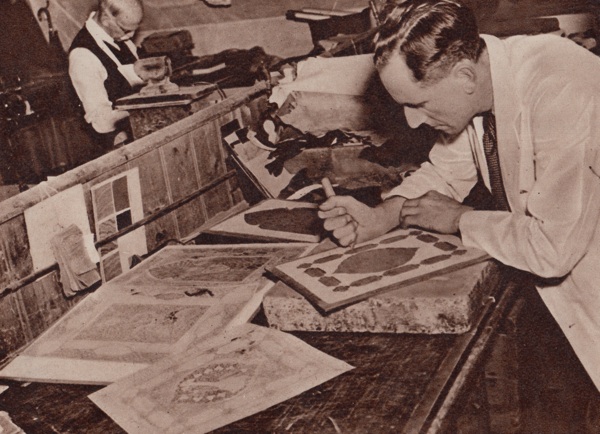
Head of the firm, Mr Stanley Bray, works on the special binding for ‘The Rubaiyat of Omar Khayyam’ a task which it will take him ten years to complete. Around him can be seen the original drawings of the two previous bindings which were lost – the first in the Titanic disaster and the second during the London Blitz. The covers will contain one thousand and fifty-one jewels inset into the leather, use five thousand pieces of leather and contain one hundred square feet of gold leaf. The completed book will be a fine and rare specimen of the English bookbinder’s art.
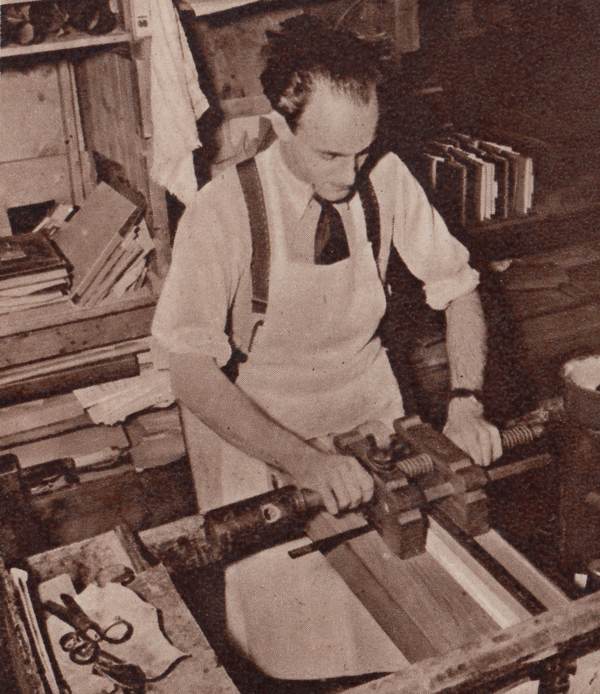
Cutting the edges of the book – the instrument being operated by the craftsman in this picture is a miniature “plough,” whose accuracy and fineness of finish are essential to good work.
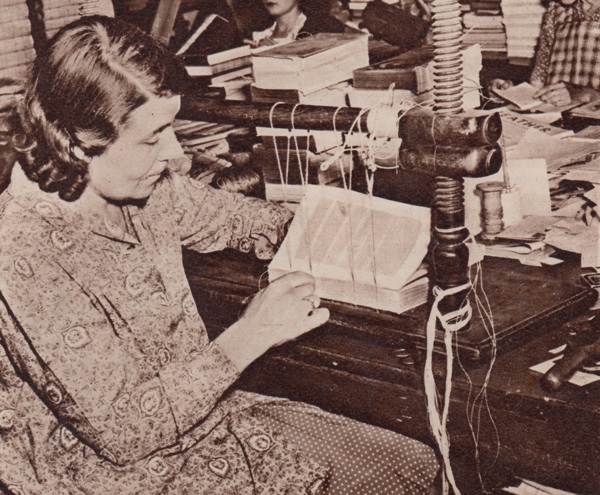
The sections of the book are sewn on a frame. This type of frame is essentially the same as those in use for hundreds of years in the bookbinding craft. Each section – usually of eight or sixteen pages – is sewn to the cords singly, until the whole book has been built up ready for the boards or covers to be added.
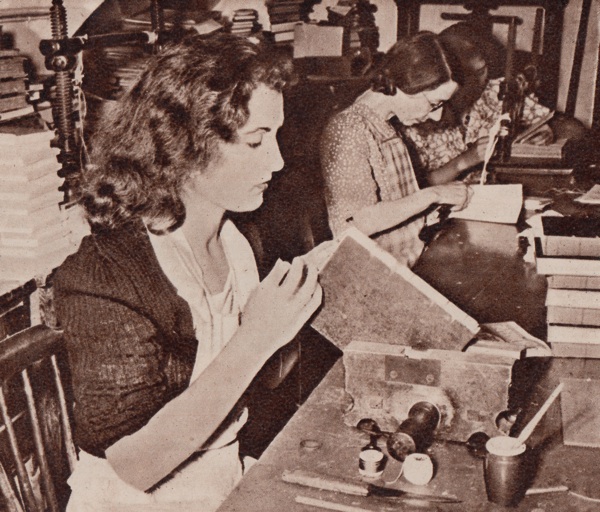
Sewing in the headband – this band, woven in at the top and bottom of the book will protect it against rough usage in handling on the bookshelves. In the finished volume, both the headbands are covered by the leather binding. The headbands are made up of silks in contrasted colours.

The cords which bind the sections of the book are frayed out so that they can be laced into the boards which form the covers. The smoothness of the finish of the leather depends upon this operation.
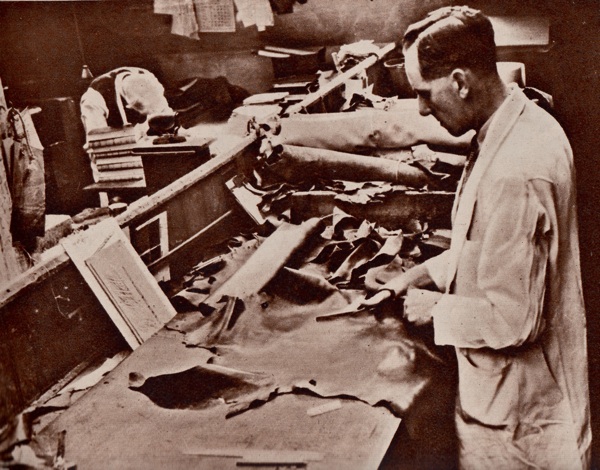
Cutting up a skin for leather back and corners. The original, rich, dark-red, native-tanned Nigerian goatskin, almost identical to the Morocco used by French and English master-binders of the eighteenth century, is now used for binding many books in this country today. The leather is usually British-dyed. Here it is being cut to size for back and corners ready for paring, as shown below. The grain of the leather adds to the finish of the book.
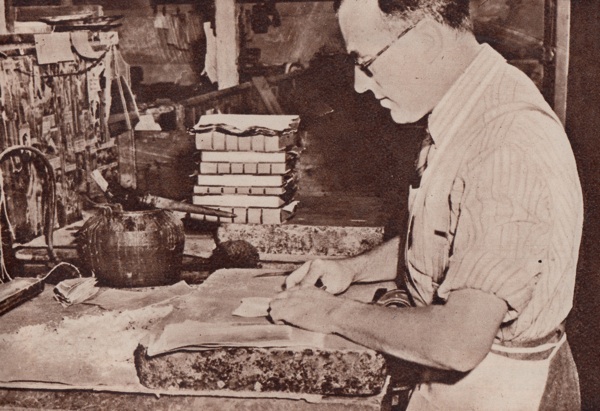
Before being pasted to the back and corners of the book, the leather has to be pared to a suitable thickness. The leather must be capable of being turned neatly over all the joints and it must also be of uniform thickness. Hence it is pared by an expert on a stone, a task which calls for great skill and sureness of touch.
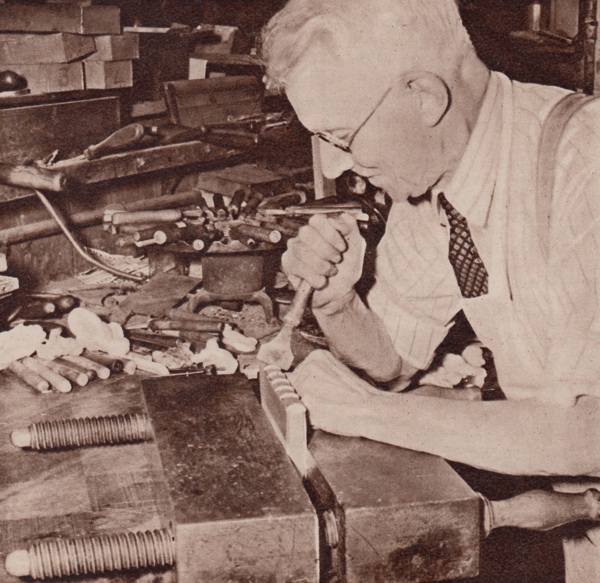
The bands on the back of the book are sharpened. Before a book is lettered, the expert finisher secures as much definition as possible. Later he will add lines across the back which will add greatly to the general attractiveness of the book.
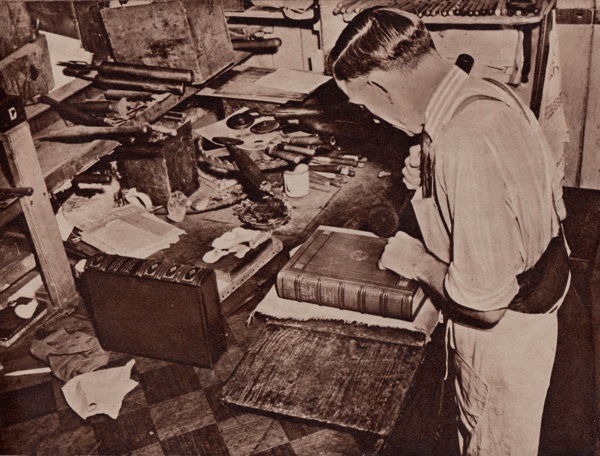
The leather margin of the front cover is decorated with gold leaf ornamentation. This work is undertaken by a finisher, who is responsible for all the tooling on the leather. He is the aristocrat of the bindery, and upon his invention in design and skill in execution the final appearance of the book depends. The craftsman above is considered by experts to be one of the best in the country today.
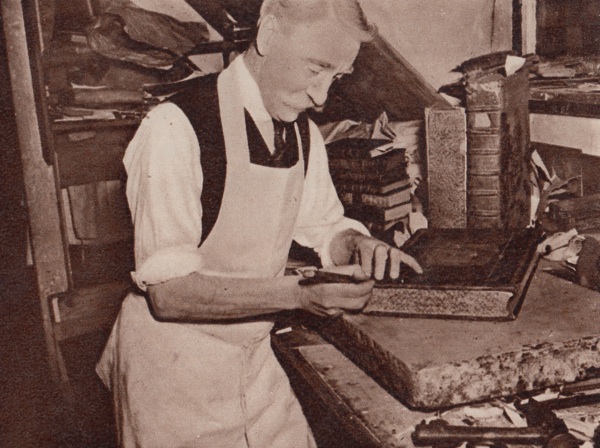
A very important feature of bookbinding is the restoration of old books – they come from rare bookshelves and most of them are old classics. Under an expert craftsman’s hand, they will regain all their old charm and use.
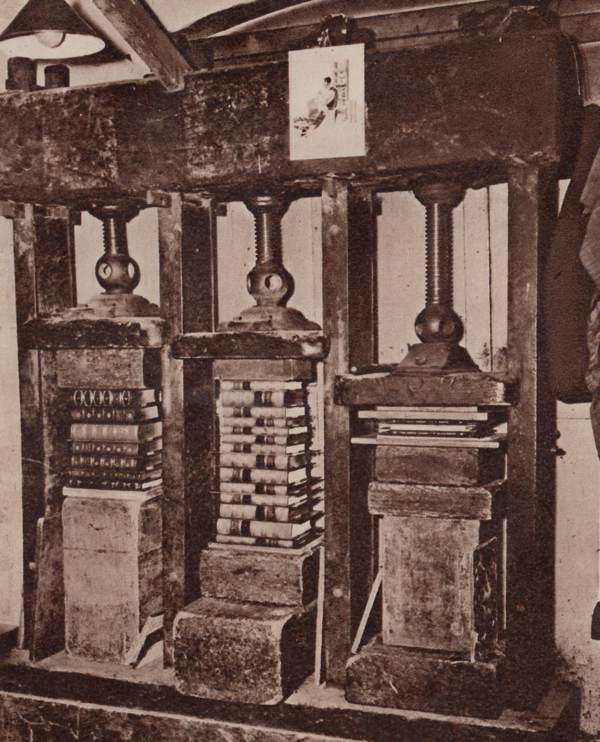
The completed volumes, hand-produced in every binding detail, receive their final pressing from twelve to twenty-four hours. After that, they will be ready to sustain the roughest usage. This massive press is over one hundred years old and is still in full use.
At one time, Britain enjoyed a great reputation for the craftsmanship of our hand bookbinders. From Cromwellian times onwards right up to the late-Victorian days, leather-bound books lined the shelves of our forefathers. Very few firms remain in this country to pursue this ancient craft, but amongst those which remain, Sangorski & Sutcliffe hold a very high place – in fact, amongst connoisseurs of bookbinding they rank at the very top. The binding of a book necessitates thirty-eight different operations – as yet, no machine has been invented which competes in skill and artistry with the art of the hand bookbinder. At their workshops in Poland St, craftsmen have prepared books for many exhibitions since 1904 – and as proof that this kind of bookbinding is still in demand by book lovers all over the world, sixty-five per cent of theoutput is for export.
You may also like to read my profile of Monty Meth
Monty Meth, Photographer & Journalist
and take a look at
At the the Wyvern Bindery